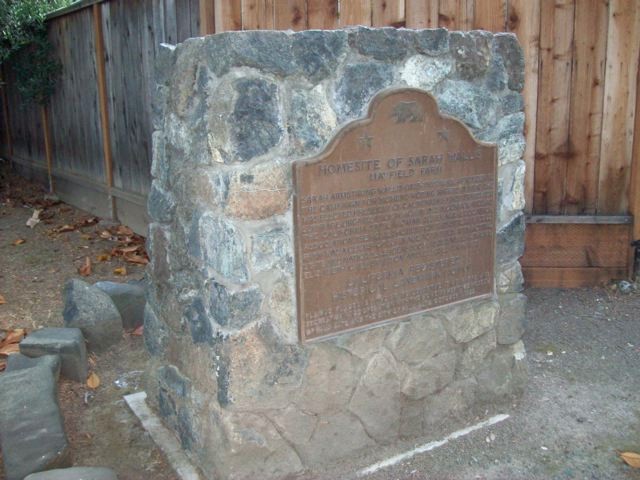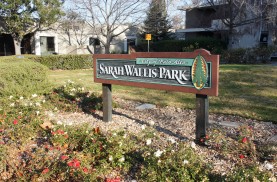Sarah Armstrong Wallis Homesite
Introduction
Text-to-speech Audio
This historical marker honors the life of early Palo ALto settler and women's suffrage pioneer Sarah Armstrong Wallis. Wallis traveled across the Great Plains with her family in the summer of 1844-prior to the United States' acquisition of California from Mexico. In 1856, she and her husband Joseph established a farm in the area now known as Barron Park in 1856. The Wallis' were leading investors in local railroad companies, and as a result, well-connected in area politics. In 1870, Sarah Wallis became the first president of the organization that grew to become the California State Woman Suffrage Education Association. The marker is located in the midst of what was once the Mayfield Farm, the home of Sarah Armstron Wallis until the economic depression of the mid-1870s forced her to sell the property. Despite her financial difficulties, she maintained local influence and corresponded with many national suffrage leaders such as Elizabeth Cady Stanton and Susan B. Anthony.
Images
This marker was dedicated in 1986 thanks to the efforts of local historians and civic organizations.

After the economic depression known as the Panic of 1873, Wallis and her husband sold their farm and lived at a cottage at Ash Street and Grant Avenue, which is now a park.

Backstory and Context
Text-to-speech Audio
The historical marker claims that Susan B. Anthony and Elizabeth Cady Stanton visited this site. As demonstrated by the work of local historian Steve Saiger, this claim may be misleading as Wallis was forced to sell the farm in 1875. Wallis continued to live in the area and she did host meetings attended by local women who were active in the community. Although it misleading to label all who attended these meetings "suffragists," these early women's rights advocates were interested in the question of how women might exert more influence in local affairs. This sentiment might seem conservative today, but was an important step in the leading women to challenge their exclusion from public life.
It is possible that national suffrage leaders called on Wallis at her home, but more likely that Wallis communicated with them via correspondence. Wallis died in 1905, and the Wallis home at Mayfield Farm was destroyed by fire in 1936.
The marker also claims that Ulysses S. Grant was a visitor to the Wallis home. While Joseph Wallis was a local judge, local historian David Woodburry and rangers at the Ulysses S. Grant National Historical Site have been unable to find firm evidence that Grant visited Palo Alto during his trip to San Francisco.
It is possible that national suffrage leaders called on Wallis at her home, but more likely that Wallis communicated with them via correspondence. Wallis died in 1905, and the Wallis home at Mayfield Farm was destroyed by fire in 1936.
The marker also claims that Ulysses S. Grant was a visitor to the Wallis home. While Joseph Wallis was a local judge, local historian David Woodburry and rangers at the Ulysses S. Grant National Historical Site have been unable to find firm evidence that Grant visited Palo Alto during his trip to San Francisco.
Sources
Steve Staiger, "Sarah Wallis: A 20th-century life in the 19th century," Palo Alto Historical Association, June 23, 1999 (accessed 7/26/16) http://www.paloaltoonline.com/weekly/morgue/spectrum/1999_Jun_23.HISTRY23.html
David Woodburry, "Did President Grant really visit Palo Alto in 1877?", Of Battlefields and Bibliophiles, June 27, 2009. http://obab.blogspot.com/2009/06/did-president-grant-really-visit-palo.html
